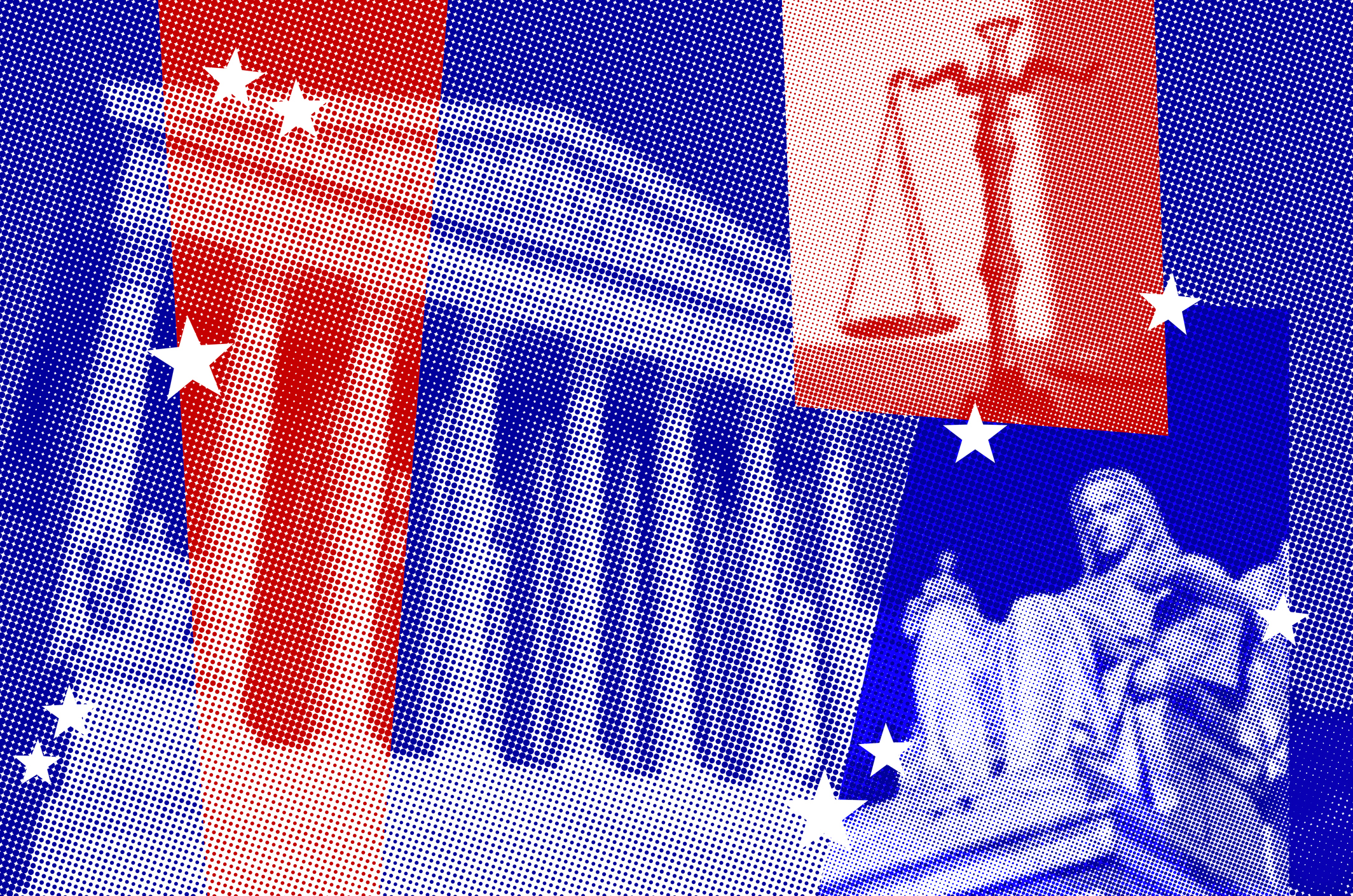Cancel culture and its roots in civil rights law.
Why Affirmative Action Won’t Die

Are we ready to face what colorblindness would really look like?
feeling of triumph has flushed through the conservative ranks this summer with the Supreme Court’s blockbuster decision in Students for Fair Admissions (SFFA) v. Harvard College and SFFA v. University of North Carolina to invalidate Harvard’s and UNC’s affirmative action programs. And it’s true that there is much in the SFFA opinion to celebrate. But the decision will not end, or even do much to threaten, affirmative action programs. As I have explained elsewhere, unless we get a legal and cultural paradigm shift in how we think about diversity and the civil rights regime, affirmative action is here to stay.
Three Generations of Affirmative Action, Two Generations of Erroneous Predictions
There is a kind of affirmative action amnesia that sets in at such moments, causing us to forget how long the practice has been in place and how many times we have erroneously predicted the program’s demise. In a 2021 law review article, I demonstrated how, although affirmative action in higher education can be traced to the beginning of the civil rights revolution in the late 1940s, scholars have been consistently and erroneously predicting the demise of affirmative action for nearly 50 years. To illustrate how often scholars have erred on this point, I began the article by collecting a sample of publications, dating all the way back to 1978, predicting the end of affirmative action. This sample constituted over 50 citations and took up several pages of law journal space.
Why have scholars been so wrong on this issue? A big factor is that they are looking at the wrong indicia. In just about every other area of law, we can look to statutes, judicial decisions, and polling data as reliable indicators for the survival rate of programs. But affirmative action is unusual, if not unique, in this respect. Indeed, to the best of my knowledge, affirmative action is the only program in American history that has broadened in scope and strengthened in force in the face of growing resistance from state legislatures, federal courts, and public opinion.
On this point, consider the following data: Over the last 30 years, nine states have banned affirmative action. The Supreme Court has invalidated almost every affirmative action program it has adjudicated in its 45 years of case law on the subject. And during that 45-year time span, the public has shifted from being split on to overwhelmingly opposed to affirmative action, so that even a state like California cannot repeal its affirmative action ban.
Nevertheless, despite this resistance, affirmative action has managed to broaden in practice. Indeed, in the early 1960s, affirmative action was limited to the most elite liberal arts colleges and universities, but affirmative action is now a defining feature of all facets of American higher education—public and private, graduate and undergraduate, elite and non-elite. Likewise, over the last two generations, affirmative action has strengthened in force. For example, in the early 1960s, elite schools had a roughly 200-point preference for black applicants. But over the next generation, that preference increased around 50 percent, to 310 SAT points.
What began as a one-time push to the finish line is now a full-blown, multi-generational, standard-deviation preference for all black applicants. What makes affirmative action different? Why is it impregnable to public opinion and legal restriction?
The Antiracist Constitution
Affirmative action is distinct because it is a vital component of our antiracist constitutional order. In my recently published booklet, How We Got Our Antiracist Constitution: Canonizing Brown v. Board of Education in Courts and Minds, I explain how Brown v. Board of Education (1954) came to be canonized in our constitutional system, and how this canonization process turned diversity into our greatest constitutional good, making affirmative action a central feature of our system.
On this point, consider how Porcelli v. Titus (1970), the first federal case adjudicating the legality of affirmative action preferences, upheld the Newark School Board’s favoring black over white teachers for promotion purposes on the ground that a colorblind approach to promotions “would be in negation of the Fourteenth Amendment to the Constitution and the line of cases which have followed Brown v. Board of Education.” In other words, by making diversity a constitutional good, the canonization of Brown made affirmative action not only constitutionally permitted but even required.
Over 50 years after Porcelli, this is still the case. To be sure, the Supreme Court does not say this in its opinions; to the contrary, the Court has consistently struck down affirmative action programs as unconstitutional. But that does not matter. So long as the Supreme Court does not unravel its work in making diversity our greatest constitutional good, judicial rulings invalidating affirmative action programs will remain ineffectual in restricting the practice as a whole. Unfortunately, the Supreme Court was not up to the task in its SFFA opinion.
How the SFFA Opinion Failed
Despite criticizing the Bakke/Grutter diversity rationale, the SFFA majority opinion was unwilling to overrule these decisions. This matters. When the Court wants to reject a legal enterprise, it does so by explicitly rejecting the precedents that stand for that enterprise, as the Court did to Roe and Casey last summer in Dobbs.
Moreover, as though not overruling Grutter did not provide a sufficiently clear signal to universities, the Court went further and explicitly identified how admissions officers could continue the affirmative action regime. Indeed, in the final page of the majority opinion, Chief Justice Roberts wrote the following “wink and nod” disclaimer: “nothing in this opinion should be construed as prohibiting universities from considering an applicant’s discussion of how race affected his or her life, be it through discrimination, inspiration, or otherwise.”
Many conservatives have sought to minimize this language on the grounds that, immediately after the disclaimer, Roberts warned that this exception cannot be used to “establish through application essays or other means the regime we hold unlawful today.” Roberts’s admonitions, however, are unlikely to strike much fear into admissions officers’ hearts, because there is unlikely to be much of a paper trail revealing how universities adopt new practices to evade the SFFA ruling. Indeed, given that admissions offices are now structured to make diversity their principal goal, no admissions office needs a formal policy to know that, when the institution decides to “consider[] an applicant’s discussion of how race affected his or her life, be it through discrimination, inspiration, or otherwise,” a white applicant’s discussion of racial discrimination will not merit special consideration, whereas a black applicant’s will. The SFFA opinion will not provide much, if any, help in defeating this shift in affirmative action practices.
Another failing is that the SFFA opinion sought to minimize the impact of affirmative action by claiming that “[t]hree out of every five American universities do not consider race in their admissions decisions” and noting that “several States—including some of the most populous (California, Florida, and Michigan)—have prohibited race-based admissions outright.” This misrepresents how affirmative action works. Affirmative action is a significant factor in just about every major institution of higher education. As Richard Sander has found, “the evidence within the law school world shows conclusively that a very large majority of American law schools not only engage in affirmative action, but engage in the types of segregated admissions/racial boosting” practices that, “if made explicit, would probably not survive judicial scrutiny.”
Likewise, the fact that nine states have banned affirmative action reveals not how limited affirmative action is but how limited law has been in restraining the practice. Justice Thomas’s concurring opinion observes how “universities prohibited from engaging in racial discrimination by state law continue to enroll racially diverse classes by race-neutral means.” He takes this to mean that eliminating affirmative action will have little effect on the racial composition of the student body.
This data point, however, reveals the inefficacy of affirmative action law, not the inefficacy of affirmative action practices. For example, Tim Groseclose witnessed first-hand how UCLA admissions subverted the California ban, and Lauren Foley has documented how admissions officers navigate around the law and engage in “resistant compliance,” obeying state bans in form while nullifying them in effect.
The Court did not consider any of this, seemingly accepting the claims made in the UC amicus brief that the California ban has stifled its ability to practice affirmative action. As evidence of this, UC pointed out in the brief that “[a]s of 2019, African American students’ proportion of UC’s freshman class was 3.87%, below their pre-Proposition 209 proportion (4.2%).” But the fact that the black student population has decreased less than half a percentage point does not indicate that affirmative action has been eliminated in the UC system. To know how effective the ban has been, we would need to know how black UC would be based on purely academic credentials, which likely would be well under 3.87 percent, given that the state is only about 5 percent black.
Fortunately, we have that kind of information for Harvard as part of the expert report used in litigation. As discussed in my Spring 2023 Claremont Review of Booksessay, Harvard is over 15 percent black with affirmative action and would be under 1 percent black without affirmative action. The SFFA opinion did not touch that inconvenient fact, which has been a feature of university admissions since the first systematic studies on the subject were conducted in the 1960s.
This raises a question at the core of the affirmative action problem: Are we prepared to be a country without affirmative action? We are, to be sure, a country prepared to celebrate colorblindness in our rhetoric. And the SFFA opinion demonstrates that we are a country prepared to condemn racial preferences in legal form. But are we prepared to grapple with the reality of what it would mean to eliminate affirmative action and institute a truly merit-based system? Until we can have this conversation, affirmative action is here to stay, no matter what the polling and the Supreme Court would have you believe.
The American Mind presents a range of perspectives. Views are writers’ own and do not necessarily represent those of The Claremont Institute.
The American Mind is a publication of the Claremont Institute, a non-profit 501(c)(3) organization, dedicated to restoring the principles of the American Founding to their rightful, preeminent authority in our national life. Interested in supporting our work? Gifts to the Claremont Institute are tax-deductible.
The Supreme Court succumbs to a fatal error in reasoning.
Curbing censorship will require a full-scale assault on the surveillance state.



